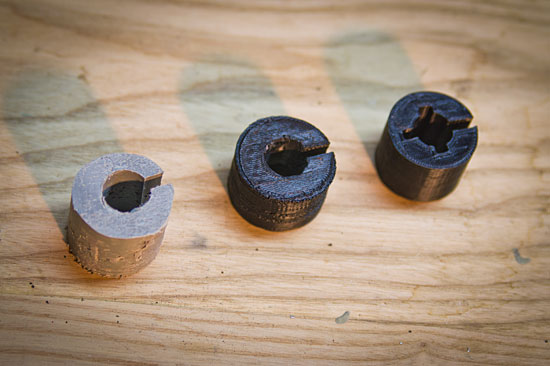
Over at the museum we do these monthly maker nights called MakeShift where we do demos and hands-on, DIY activities in BAMspace, which is our in-museum makerspace. These are adult-only events… that we happen to hold in a children’s museum, at night, with alcohol.
Back in March we did a Nerf Night, and we did things like make our own darts, modified Nerf guns (to make them more powerful) and then had a Nerf War. People seemed to like it, so we decided not to skip doing a MakeShift in July, and instead punted and went with another Nerf War, and this time we just focused on running around like maniacs and shooting each other. It was a blast! (And yes, we will definitely do it again!)
I wasn’t sure everyone would want to play with Nerf guns the entire time, so I 3D printed a few piece so we could play air hockey on one of our exhibits. Word Headquarters features these long skinny tables with jets of air that move tiles, and it seemed like all that was missing were a few paddles and pucks.

I grabbed a puck from Thingiverse and printed it scaled down just a bit. It moved great on the side that was printed on the glass, but the other side was not smooth enough, so I did a bit of sanding to help things out.

I then printed some paddles from Thingiverse to knock the puck around with. Again, they were scaled down to match the size of the table.

Here’s the pieces. I made a set for each of the two air tables in the exhibit. Below you can see a few visitors taking a break from shooting each other to play a game of air hockey. I’ve left the parts in BAMspace in case you’re ever at the museum and feel like a quick game of air hockey.

Oh, and if you want to see a ton more photos of the Nerf War action, check out John McGeen’s blog post MakeShift: Nerf Night II.














